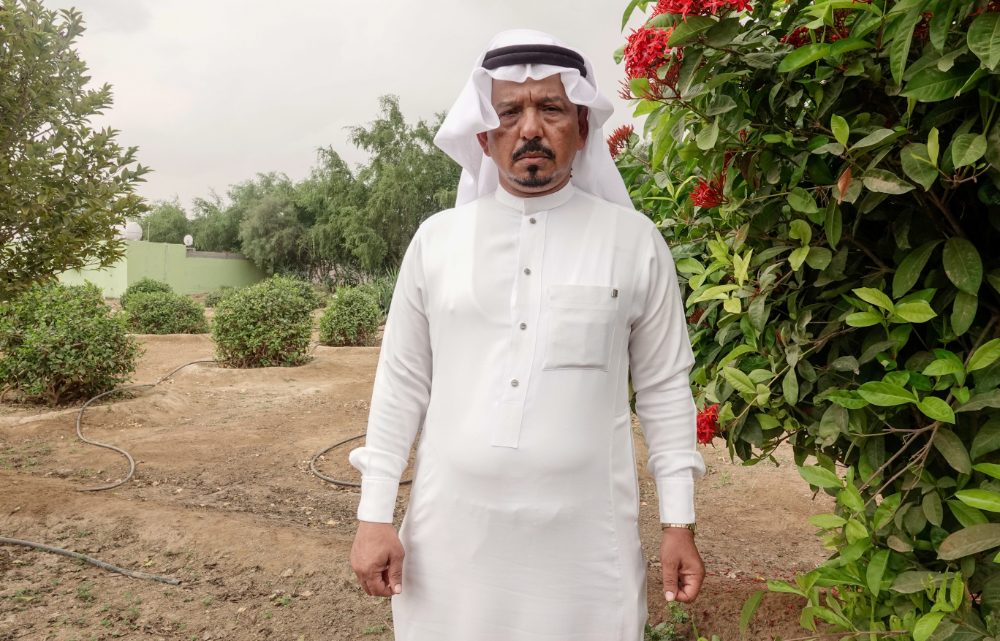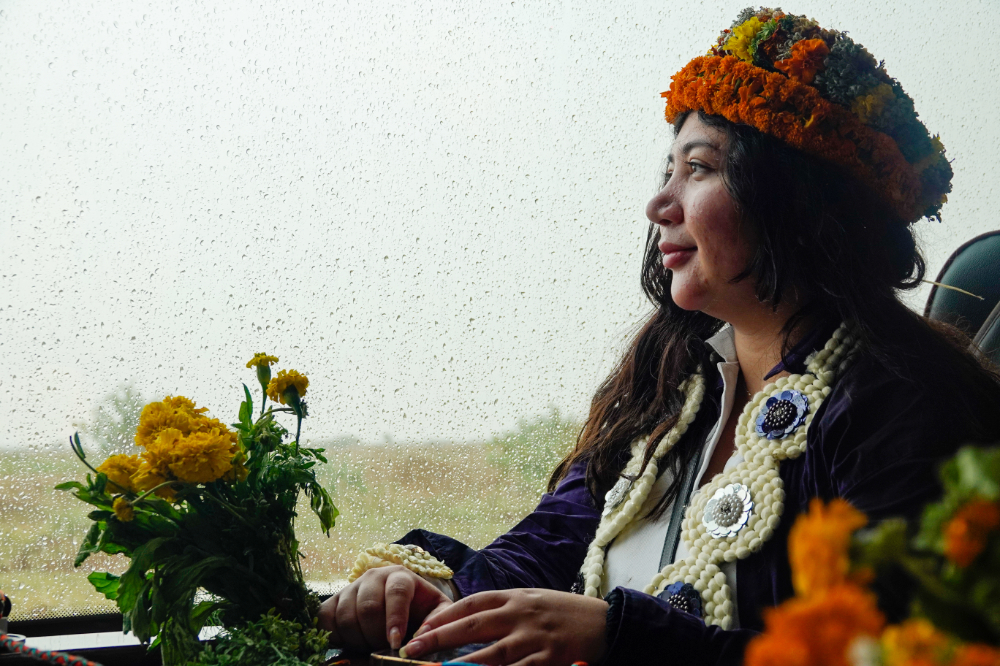RIYADH: A trip to this southwest part of the Kingdom, to the province of Jazan, will offer travelers an immersive experience in a distinctive and alluring culture.
Flowers and plants are among the most significant elements of Jazan’s way of life because of the region’s rich and fertile soil that supports its horticulture.
About six months ago, a group of farmers came together and formed the Association of Jasmine and Aromatic Plants in Jazan.

Visitors enjoy wearing jewelry made of flowers. (AN photos Huda Bashatah)
Mohammed Al-Hobani, chairman of the body, told Arab News this was a “promising” way for the industry to reach its objectives. “The most important of these goals is to set up a factory in the Jazan region to distill jasmine and aromatic plants, just like … in the Taif region.”
Al-Hobani also spoke about the marketing of jasmine in various regions of the Kingdom, including supporting locals through small development projects such as embroidery and design.
FASTFACTS
• The second edition of the Jasmine and Aromatic Plants Festival will take place this year.
• Flowers and plants are among the most significant elements of Jazan’s way of life because of the region’s rich and fertile soil that supports its horticulture.
Together with Al-Mayadeen Company, a training firm hired by the Ministry of Agriculture, Environment and Water, a three-month training course was offered on how to make jewelry inspired by jasmine flowers.
There were 130 people in the first intake, rising significantly to 640 in the second.

Mohammed Al-Hobani. (AN photos Huda Bashatah)
Al-Hobani believes it is important to invest in jasmine and other aromatic plants because they symbolize the region and have an ancient agricultural heritage.
The most important of these goals is to set up a factory in the Jazan region to distill jasmine and aromatic plants, just like ... in the Taif region.
Mohammed Al-Hobani, Chairman Association of Jasmine and Aromatic Plants
He said all wedding ceremonies in Jazan feature these plants. Brides must wear necklaces and crowns made of jasmine flowers due to their cultural significance.
“Because it is in high demand, farmers want to grow it and make money from it,” he said.

(AN photos Huda Bashatah)
The first Jasmine and Aromatic Plants Festival was held in 2018, overseen by Jazan Governor Prince Mohammed bin Nasser. The second edition will take place this year.
The event will include the Jazan Winter Festival and other special attractions showcasing locally sourced harid, mango, coffee and honey.
Dafer Al-Fahad, director general of the Jazan Mountains Development Authority, told Arab News: “Jazan Province has many comparative advantages. The six mountainous governorates are full of investment opportunities especially in agriculture, agritourism, wellness tourism, and heritage sites.”

















